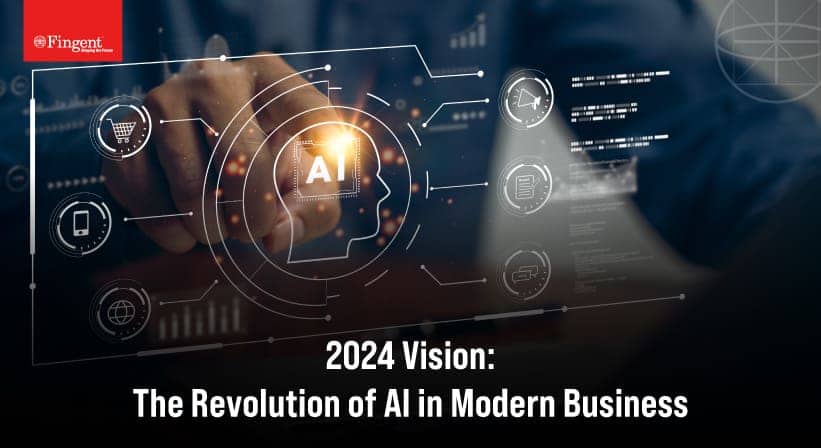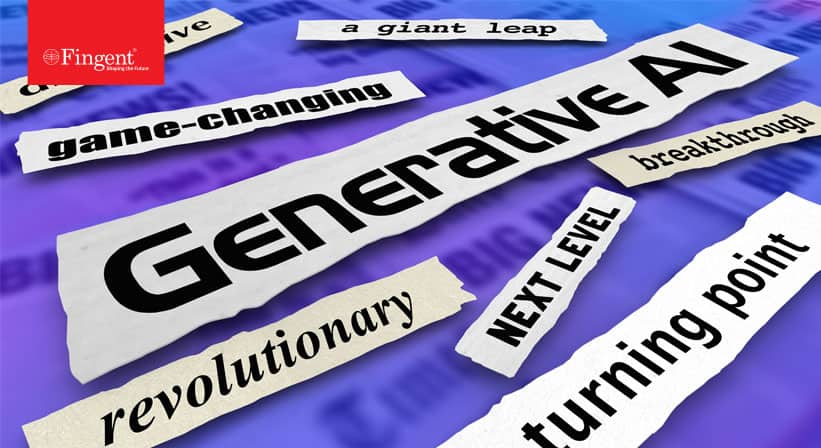CTOs Guide – How Robotics and AI Can Improve Customer Experience
Today’s consumers are tech-savvy, demand consistency and know they can switch brands at any time. Therefore, Customer Experience (CX) is extremely important now more than ever. Customers aren’t just buying a product. They are looking to gain a good experience throughout the customer journey – before, during and after their purchase.
Imagine the pressure of not slipping up in any instance! If it wasn’t for AI and robotics, this could be a daunting affair. Thankfully though, the application of robotics and AI has streamlined the entire customer journey. As a CTO, leading the company towards this technological transformation is a great responsibility. This blog will take you through 4 ways in which robotics and AI can improve customer experience.
1. Personalization
Hyperconnected customers of this digital age highly value personalization. This personalization is expected at all touch points and marketers are employing various strategies to achieve this. In the basic sense, this includes presenting personalized recommendations using algorithms and predictive analytics. Algorithms mine transaction data, browsing patterns and purchasing behaviors to gain customer insight. This information then enables to design personalized offers and create cross-sell opportunities.
Machine Learning is going one step further with AI-Augmented Contextual Analytics. Contextual Awareness is made available through machine learning and human curation. This awareness is implemented across the entire data and analytics workflow of the company. Thus, personalization is made possible throughout the operations and can be implemented at any touch point.
Sentiment Analysis is the next big thing that companies are implementing in order to improve customer experience. Voice, text and visual engagement can be analyzed by technologies to gauge sentiment and emotion. Voice biometrics over phone calls, parsing of facial expressions during video chats, and texts through chatbots can be used to understand emotion and intent. This insight helps companies measure and deliver customer satisfaction more effectively.
Read More: Predictive Analytics: The Key to Effective Marketing and Personalization
2. Improving Internal Processes
As we have discussed, customers expect a satisfactory experience in all touch points. This includes the way the company is run, the backend and the corporate image. Efficient processes and effective decision-making filters down to a profitable company and happy customers. AI and robotics can be used to achieve this.
Mark Robinson, co-founder of the world leading SaaS solution Kimble talks about how augmented intelligence helps businesses grow. “Using augmented intelligence to make suggestions to staff, and to record their response, means that humans and the machines can work together to come up with the best solutions,” he says. “There is less need to worry that people are going to miss important actions or take wrong decisions because of the visibility of what’s going on.”
It is believed that AI has the power to increase productivity by 40% or more by 2035. By automating processes and supporting innovation, AI can improve manufacturing and business processes. One example is smart product ordering systems, which use the power of AI to streamline order fulfillment. Our recent blog brought out the opportunities in this: “From ensuring that the product is personalized and available where the customer wants it, to streamlining the order shipment and delivery process, the customer experience is enhanced by the intelligent product ordering system.”
3. Effective Pricing
“What I ‘charge’ today has nothing to do with yesterday or tomorrow. It has to do with ‘now’!”
– David Wayne Wilson
This has profound significance today, where pricing drops or increases by the second. However great your marketing, your technology and other systems are, it all comes down to pricing. If a consumer gets the same benefits and quality at a lesser cost, he will opt for a cheaper option. Pricing is therefore a vital component in competitive advantage. This means that businesses must keep a close eye on competitors’ pricing behavior.
That is where Dynamic Pricing Science holds significance. With the power of Artificial Intelligence, cognitive algorithms, big data and machine learning, businesses can now effectively adjust their pricing strategies in real-time. Dynamic Pricing Science enables tailor-made pricing solutions to customers at the right time and consistent across channels. It helps understand buying patterns, identify effective correlations, compare competitor prices, match it across channels and create a customized offer – all in real time.
4. Improving Response Time
Response time is crucial in business. This is true in leads conversion as well as customer service. The importance of response time in lead conversion was brought out by Dave Elkington, the CEO and founder of InsideSales.com. Quoting a study he was involved in he says: “The study revealed that the odds of making contact with a new lead are extremely high if you call within the first 5 minutes of submission … a rep is 100x less likely to make contact if the first call is made 30 minutes after submission. The odds of making contact drop by 3000x if the first call is made 5 hours after lead submission.” Converting a lead into a customer is the first customer touch point and it is vital to get it right.
This is important in customer service as well. The State of Multichannel Customer Service report found that:
- 68% of people stop doing business with a brand due to a poor customer service experience.
- 34% of people feel that quick resolution of their problems was the most important feature of customer service.
- 61% of people on social media expect a response from a brand in less than 24 hours.
A bad response time could break a business as the numbers show. However, AI and machine learning have helped immensely in this regard. Chatbots are proving to be a great boon, especially when it comes to swift response on first-level queries. This ensures that there is an immediate response and minimizes time spent by personnel on repetitive queries. Agents can then handle deeper conversations and conversions with the assistance of AI.
China Merchants Bank is an excellent case study on the effectiveness of real-time chatbot interaction. Interactions through these bots had reached a record of 41 million by the end of 2015, with the chatbot handling 99.5% of the questions with an accuracy of 99.8%!
Power Your Customer Service With AI
As you can see, the power of AI and robotics in customer service cannot be overemphasized. Fingent works with clients across industries all over the globe. We would be happy to help you with any questions you might have. Drop us a message and let’s get this rolling.
Stay up to date on what's new

Recommended Posts

18 Apr 2024 B2B
Applied AI For Document Processing
"It's becoming increasingly clear that AI is the future, and almost everything else is a sideshow." - World-renowned computer scientist Geoff Hinton AI has taken over almost every aspect of……

10 Jan 2024 B2B
AI Trends Set to Transform Businesses in 2024
In the dynamic realm of modern business, the profound impact of artificial intelligence (AI) continues to unfold, reshaping industries and redefining conventional practices. As we step into 2024, the transformative……

26 Nov 2023 B2B
Finding Success in the Aviation Business with AI
“Aviation is the branch of engineering that is least forgiving of mistakes.” - Freeman Dyson, British-American theoretical physicist and mathematician. The truth in that statement is sobering indeed. The precision……

27 Oct 2023 B2B
Generative AI – Magnifying the Power of AI in Business
Are you sick and tired of performing the same monotonous task every day? Well, if your answer is yes, then Generative Artificial Intelligence can benefit you. Technology is evolving at……
Featured Blogs
Stay up to date on
what's new










